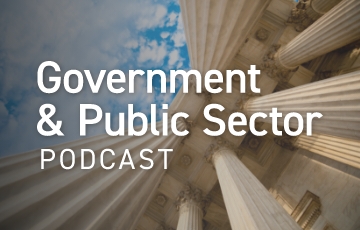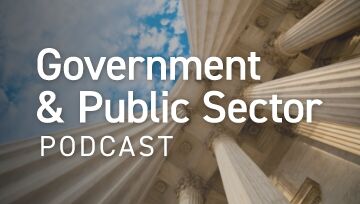Contributor: Kathleen Kizior
The American Rescue Plan Act (ARPA) is one of the largest economic stimulus packages in U.S. history, focused on addressing the immediate challenges posed by the COVID-19 pandemic and supporting the recovery of individuals and the economy. Under the Coronavirus State and Local Fiscal Recovery Funds rule (31 CFR 35), state and local governments were provided provisions for the use of this funding, including dates and deadlines.
All state and local governments that received ARPA SLFRF funding must comply with the 2022 Final Rule, which contains all regulations and dates pertaining to obligations. In addition to the Final Rule, the U.S. Treasury issued the Obligations Interim Final Rule in November of 2023. This Interim Final Rule (IFR) addresses questions and concerns regarding obligations, including issues that may occur after the obligation deadline.
With the obligation deadline of December 31, 2024, approaching, state and local governments should begin the process of reviewing their current obligation status and plan for future expenditures and obligations of their ARPA funding.
Understanding Obligation Terminology
Understanding obligation terminology is directly related to recipients’ ability to abide by ARPA regulations. The 2022 Final Rule defines an obligation as “an order placed for property and services and entering into contracts, subawards, and similar transactions that require payment.” Funds must be committed for an eligible use through a contract, purchase order, subaward or an alternative binding document.
An unobligated balance is the amount of funds under a federal award that the non-federal entity has not obligated. This is the balance of the funds not included in a contract, purchase order, subaward or an alternative binding document.
Unliquidated financial obligations are financial obligations incurred by the non-federal entity that have not been paid (liquidated). These funds would be obligated but not incurred. For reports prepared on an accrual expenditure basis, these are financial obligations incurred by the non-federal entity for which an expenditure has not been recorded. Determining grant unliquidated obligations involves assessing the outstanding commitments made under a grant or contract.
Steps for Obligation Deadline Readiness
The following is a step-by-step process to help APRA-funded recipients achieve obligation readiness by the December 2024 deadline.
- Review Funding Agreements, The Final Rule, and Compliance Guidance
Begin by thoroughly reviewing ARPA funding agreements, the most current ARPA SLFRF Final Rule, and other compliance publications. Identify the terms and conditions and specific requirements related to obligations.
- Examine Financial Records
Access financial records related to the ARPA funding, including records from an accounting system, grant management system, payroll system, purchasing system, etc. Once you have all records collected:
- Examine the records related to existing expenditures as well as projected expenditures (budgets, encumbrances, accrued expenditures).
- Ensure that all financial transactions related to the grant are accurately recorded or projected.
- Review invoices and expenditures documentation to identify the payments that have already been made. This will aid in calculating the amount of funds that have been liquidated or will be liquidated soon.
- Identify Obligated Funds
Determine the amount of funds that have been obligated under ARPA SLFRF. This includes the total funding amount specified in the grant agreement. Obligations may include costs such as salaries, materials, subawards and other allowable expenses. Though some compliance requirements are overreaching for the entirety of the grant, expense and obligation allowability is dependent on the expense category in which the funding is used.
- Calculate Unliquidated Obligations and Obligated Balance
- Unliquidated Obligations: Subtract the total liquidated amount (payments made) from the total obligated amount to calculate the unliquidated obligations.
Unliquidated Obligations = Total Obligated Amount – Total Liquidated Amount
- Unobligated Balance: Subtract the cumulative amount of the recipient’s unliquidated obligations and expenditures from the total of awarded funds.
Unobligated Balance = Award Amount – Cumulative Obligated Amount – Cumulative Expenses
- Consider Accruals and Adjustments
Identify any necessary accruals or adjustments. Accruals involve recognizing expenses that have been incurred but not yet paid, and adjustments may be needed for changes in project scope or unforeseen circumstances.
- Document the Process
Maintain thorough documentation of the calculations and the supporting evidence. This documentation is essential for audit purposes and for ensuring transparency in financial reporting.
- Periodic Reassessment
Throughout the 2024 calendar year, reassess unliquidated obligations and the unobligated balance as projects progress. This is particularly important for the longer-term projects with evolving commitments.
- Compliance with Regulations
Ensure that the determination of unliquidated and liquidated obligations complies with the ARPA SLFRF regulations, accounting standards, and grant terms and conditions. Ensure an eligibility review is conducted before obligations are incurred.
- Reporting
Stay current on your reporting in the U.S. Treasury Portal. Obligation balances are required to be reported, and this can aid the recipient in tracking of the obligations per project and expense category.
The nine steps above can provide recipients the comfort of knowing that the obligated amounts will be accurate as the deadline draws near. This process may vary depending on the organization.
Meeting the Deadlines
Recipients must meet three deadlines:
- The obligation estimate deadline is April 30, 2024.
- The funding obligation deadline is December 31, 2024.
- The ARPA SLFRF expenditures deadline is December 31, 2026.
The Obligations Interim Final Rule released in November 2023 does not affect the obligation deadline. If the recipient does not obligate funds by December 31, 2024, the unobligated balance must be returned to the funding agency.
To get the most up-to-date information on the State and Local Fiscal Recovery Funds, including deadlines or changes that may occur with obligations or basic requirements, we recommend frequently checking the official website of the U.S. Department of Treasury or other relevant government resources.
We Can Help
Consult with a Cherry Bekaert Grants Management Professional or financial expert for additional questions or concerns regarding ARPA obligations.




